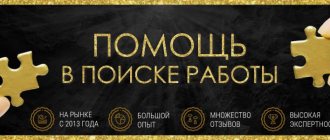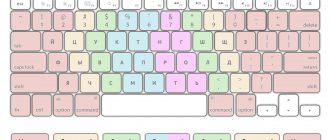Hello friends! Lyudmila Redkina is with you. There are times when we need to process a huge amount of information. And it is important to “swallow” and remember these terabytes of new knowledge correctly. There are many different techniques that develop memory and thinking, but I want to talk about speed reading, which makes your brain more active, increases the speed of all mental processes, you move forward and keep up with the times! Below I will tell you how to learn to read quickly and describe effective methods for developing speed reading.
COMPLETE LIST OF HUMAN SKILLS
Benefits of Fast Reading
Brain research has given us valuable information: it can “think out” without awareness, “complete” without the whole picture. But many people have no idea about this. We are trying to improve memory and brain function, although initially we do not know what it is really capable of.
Did you know that without vowels in a line you will understand what is being said? Did you realize that when you close the third part of the text vertically, you will also fully understand its meaning? Teaching speed reading techniques is based on these seemingly trifles. But when “absorbing” large amounts of information, speed reading saves a lot of time.
Most likely, among your friends there is a person who needs a maximum of 1 day to read a book, while you will need about 5 days. Yes, and sometimes it’s so difficult to force yourself to read a book! There are not many people who read quickly, but they use this skill to their advantage to develop their thinking and succeed at work. Who would refuse success and saving time?!
As you watch people read quickly, you may have noticed how they turn the pages within seconds. Do they really not remember or see anything? They see everything, but when reading this way, their brain works hard according to a previously worked out scheme, the person knows:
- what information is he looking for;
- how it will be useful to him in life;
- what other ways can he obtain such information?
All these tricks help you cope with the task of obtaining information as quickly and efficiently as possible.
We teach a child to divide words into syllables
Before your child begins to master literacy, teach him to divide words into syllables. Pronounce the words by clapping the number of syllables. In Russian, a word has as many syllables as there are vowels: sa-mo-let, ka-ran-dash - 3 vowels, 3 syllables; u-zhi - 2 vowels, 2 syllables; sport - 1 vowel, 1 syllable, 1 clap.
Play Finish the Word. You throw the ball to the child, saying the first syllable of the word, for example, “ma.” The child returns the ball, calling the ending, for example, “sha.” Say the word in full: Ma-sha. Guess the endings of words, change places with your child.
Preparation
To learn how to read quickly at home, you need to prepare. Our main computer will do the rest for us. The brain is used to working quickly. If you quickly read this text now, you will understand what we are talking about.
According to rzeuzlattam ilssoevadny anligsyokgo unviertiseta, not vzhnao, in kaokm proyakde in solve rsapjooleny bkuvy. Galovne, so that the preavya and pslonedaya bkvuy blyi on the mseta. Osatlyne mgout seldovt in ablosyuontm bsepordyak, all-torn tkest without wandering chtaitsey. The main thing is that we consider everything as a whole, and not separately.
Happened? Me too! If you don’t think about each letter separately, you can “swallow” a large piece of text, even if the words and letters in it are confusing.
You can also try to read the text in this picture, where some letters are missing at all, they have been replaced, but the brain still reads the text, and you understand the meaning.
Speed reading mixed up letters You have decided to develop your speed reading, but where to start? I recommend starting with statistics so that over time you can see what you have achieved. Statistics is a test that will tell you how fast you read.
An excellent tool is the reading speed test on the Wikium website. This is an excellent development platform where you can find exercise equipment for brain development. I can boast of my results: 600 words per minute and 50% text comprehension. This is an average level, there is still something to strive for. What are your results? Please note your initial results in the comments.
After passing the test, it's time to start developing your speed of reading and understanding information. Yes, that's the rub. You can read quickly, but in order to remember what you read, you need to practice.
By the way, about children. It is quite difficult to teach a first-grader how to speed read, but a girl or boy of 9–10 years old can be trained to quickly and understandingly absorb information. Various techniques help with this, in particular a table of syllables.
Intonation is not just punctuation marks
It would seem that when reading you need to focus on punctuation marks: a comma is a small pause, a period is a long pause, an exclamation mark is a very long pause with increasing intonation. But we do not speak with periods and commas, but with intonation flows: we ourselves decide what exactly needs to be highlighted in the text, which word or part of the sentence to pay attention to. It is this word or part of the sentence that becomes the main thing; it may contain an emotion, a request, or displeasure. We try to draw the attention of listeners to this fragment of text. Sometimes we get bored when someone reads prose or poetry out loud. Why? We are not satisfied with the intonation flow. A story or poem comes to life with the help of a presentation in which there are no periods or commas, but only intonation.
Syllable table
The syllable table helps to train reading at any age. Below is a simple table in Russian.
| A | ABOUT | U | E | AND | |
| B | BA | BO | BOO | BE | BI |
| IN | VA | IN | VU | BE | IN AND |
| G | GA | GO | GU | GE | GI |
| D | YES | BEFORE | DU | DE | DI |
| Z | BEHIND | ZO | memory | WE | ZI |
To improve your skill, read out loud all the rows of the table to the right and left. Gradually speed up your reading pace. Then you can move on to syllables consisting of 2 consonants and 1 vowel.
| A | ABOUT | U | E | AND | |
| NS | NSA | NSO | NSO | NSE | NSI |
| MK | MKA | MKO | MKU | MKE | MKI |
| WB | VBA | UBO | Wetland | VBE | nosocomial infection |
| ETC | PRA | PRO | PRU | PRE | AT |
| ST | STA | ONE HUNDRED | STU | CTE | STI |
The training technique is the same here. Try to reach your maximum reading pace. It is necessary to read aloud to an adult in order to develop rapid reading.
A child of 7 years old can also be given these syllable tables when learning to read. This will be a kind of stimulation for reading for his brain and visual analyzer.
Using this technique, already at the age of 10 the child will be different from his peers. After all, at this age, children’s brains are especially plastic and receptive to educational programs. It’s us adults who need to think about how to develop memory and attention in order to work more efficiently.
ABC in verse "Happy Zoo"
We learn the alphabet in a playful way - with the help of animals and funny poems about them!
Read more
Didactic games:
“Who can come up with the most words starting with A?” (names are possible), “Body” (put items in the basket on A). Print the vowel sounds on a color printer in red, in large font, and as you study, stick them on household objects (A - aquarium), etc.
After studying these letters, we begin to sing the song of vowels every day, namely, to sing, and not to read: A A A A A, U U U U U, O O O O O, I II II, Y Y Y Y Y, E E E E E.
Then we make up the first syllables from vowels (printed on a piece of paper, font 72) and pronounce them drawlingly, holding out the first sound until the child understands what the second sound is (We conduct the lesson for no more than 5 minutes).
AU AI AO AA AE UA IA OA EA EA UI OI OY UY until complete absorption, this will take 2-3 days at first.
Now let's start learning consonants
(M W B V D J J K L N P R S T) and compile speed reading tables with them (the first in large font, the next ones we reduce gradually). We read using the “Echo” technique, you read 5 syllables each, the child repeats.
We glue the same syllables onto separate pieces of cardboard and play “Hide and Seek”. Hide the cards around the room so that they are easy to find. When the child has found a card, he must read the syllable or word, or rather, it turns out to be a repetition by heart, the syllables are memorized visually. You search in turn, then you and then the child. This helps in the game to repeat the syllables several times and gives him confidence that he can read.
Table 1.
ma sha da pa ba ga zha ra sa la ka va mom Masha Mara heat soot porridge Kama sama Sarah lady lama Lara our your Dasha rama glad dad Pasha para ward baba tara Natasha Panama loon (cut this into separate cards for playing hide and seek) .
After slow assimilation, we move on to the game: “Finish”. Who will read it faster? If there is no interest in reading, then connect toys, read with dolls, bears, play school.
Table 2.
mo ro bo do po lo no so to fashion water soda dew scythe lotto swamp chisel harrow beard rock weather deck magpie crow gate cow straw leg mountain road shovel
Table 3. (in front of the mirror, show the position of the lips when pronouncing I, Y)
mi we bi would vi you gi di dy ki li ly ni ny pi py ri ry sy sy ti you zhi shi soap cute mouse bear were beat howling pitchfork weights legs water marvel movie fox linden bast horses they elephants drank dust fish lynx holes strength sons cheeses tina cobweb raspberries Kalina Polina washed knocked out guitar sofas sheep lived sewed tire awl huts car kids spikes bellies knives good skis leather roads pies
The tables must be repeated daily for fluent assimilation. An adult can sometimes read a word incorrectly. Let your child correct you. This develops attention to words and maintains reader interest. Now study the vowels E, Yo, Yu, Ya (pronounced YE, YO, YU, YA)
Table 4. (U, Yu) (E, E) (E, O) (A, Z)
mu mu bu byu gu gyu do du tu tu ru ryu su siu nu nu flour hand beads geese duda soul duma puma dune tour tyurya hand poryu sum sum here nougat nunya paper sleeves soups menu I give sing I play salt it ate these raccoon mayor chalk chalk they say the ox led the floor sang aunt uncle small kneaded the hedgehog ruff Tom Tyoma Tanya Manya
Table 5. (Learning the letters: Z, F, X, C, Ch, Shch, Y)
for fa ha tsa cha cha dawn charge headlight phase pheasant hut hala robe tsatsa chick thicket grove dacha luck task tea seagull miracle I want to fly I teach may my sing drink lei this pity pour swarm T-shirt jay milking watering can
Table 6. (Learning to read words with a closed syllable)
he dream juice grade there that tok here shooting range side beech buck stake lump cat mole house catfish crowbar mouth sat down chalk ox angry soap mil
barrel cat mouse mish shish spoon stove fish holes crust boat roll mountain push
Table 7. (Practicing the pronunciation of hard and soft consonants)
Mal-mol-myl-mul-mil-mel val-vol-led-vil tank-side-bull-beech was-beat-white cat-whale varnish-lik-crowbar-forest-fox nose-carried branch-juice-cheese -ser- sat down snout-roar-mouth-rice-rad tok-tik-knock
How to learn speed reading with exercises
You can help your child learn to read quickly using the following exercises:
- Reading simple words. Write the words on separate sheets of paper: house, hedgehog, cat, moat, whale. Show them to your child, and he should read them as quickly as possible. When he learns to read them instantly, write words of 4 letters, then 5. After that, move on to word combinations.
- Show your child words with pictures first. Then cover the pictures. The next step is to show words along with examples so that he learns to quickly count in his head. Make sure that he reads correctly, because not only visual memory is involved in the process, but also auditory memory.
- Along with the development of rapid reading, develop diction. To do this, use tongue twisters or rap with your children (within reason!). Exercising together with your child will bring a lot of positive emotions to you and a lot of impressions for the child.
By the way, such training is suitable for learning to read French, German, English and any other foreign languages. In addition, you will also be able to read with mixed up letters, since this speed reading technique also works in foreign languages.
Speed reading techniques in different languages
But you can’t read it like that in Arabic, because it uses signs instead of letters.
Exercises for adults differ from those listed above. The following tasks will help you read quickly.
Settings
Tune in. Look at the picture of your desktop, look at its small details. Then close your eyes and remember the whole picture, down to the smallest detail. Open your eyes and compare the real picture and the imagined one. When reading, you need to pay attention to the content, and not to the smallest details.
Metronome
If you have a metronome, set it to a slow speed. Read the passage of text slowly. Then increase your speed. You should achieve not only quick reading, but also understanding of the text.
Reverse order
Read in reverse order. The reading speed to the right and left should become equal.
Help from a friend
Ask someone to find a word in the text, then find it as quickly as possible. Practice this several times.
Slip
One of the fastest ways to learn is the “sliding” exercise. Do not peer at the letters, but try to cover the maximum number of units in a few seconds: letters, signs, numbers. At first you will remember little, then you will be able to absorb more and more information.
By the way, this exercise works when learning to read notes from a sheet, drawings and other necessary information.
Diagonal
An exercise where you read the beginning and end of a line. There is even a program for reading diagonally. At first you will not understand anything, but after some time of training you will see that your brain is absorbing much more information.
Watch your breath
There is a special reading technique: read aloud a sentence that does not carry a semantic load, in one breath. You only need to exhale when the sentence you want to emphasize begins. This creates a pause that is not provided for in the written text. You can intonate without thinking, using only your breath. There is no need to emphasize every word, because in the text all words cannot be the main ones. It should be understood that important words may be different for each reader. That is why people sometimes read the same work with completely different intonations, which give a feeling of warmth, coldness, detachment, despair, everything that cannot be expressed in words.
Useful tips on how to learn to read well and quickly
As you learn to quickly process written information, you should use the following tips.
Don't say the words
Try to read only with your eyes. Even at school, we get used to pronouncing words in a whisper when we read a text. This interferes with speed reading. It is known that moving the lips slows it down. So break this habit if you want to speed up your reading.
Don't come back
Often, when the reader finishes a line, he returns to the one he just read. This slows down the pace significantly. Try not to return to the same line several times; it is better to use a ruler or your index finger.
Don't miss the text
An amazing technique is text tracking. Turning your head and using your hands to help speed up the reading process. Connecting peripheral vision is very useful for mastering a huge amount of information.
Learn
Don't forget that any skill requires dedication and training. You can learn how to read better from books. For example, the book by E. A. Nefedova and O. V. Uzorova “The fastest way to learn to read” will be very useful for you. Syllable tables.” These authors also help you learn to read English quickly.
Video
Also be open to receiving helpful tips from video sources. See one of them below.
When should you teach your child to read?
When to start? One child already knows the entire alphabet at the age of three, while another begins to show interest in books only at the age of five. It's not a matter of age, but a child's readiness to master literacy. Key indicators of such readiness:
- the child speaks in separate sentences;
- pronounces most sounds clearly;
- can consistently tell how he spent the day in kindergarten or visiting his grandmother;
- navigates in space, knows the concepts of “left”, “right”, “up”, “down”;
- holds attention, can do one thing (draw, sculpt, assemble a construction set, etc.) for 10–15 minutes.
Teaching a child to read should begin not with letters, but with sounds. It is sounds that he hears from birth, and letters are a means of recording sounds. Having learned to distinguish sounds in spoken words, merge sounds into syllables, and divide words into syllables, the child will easily master reading.
Training for mastering speed reading
The Speed Reading course from Vikium will help you achieve excellent results. The course will allow you to improve the processing and memorization of information. You will receive exercises to develop attention and memory, exercise equipment to activate brain activity, and master various techniques for concentration and peripheral vision.
Vikium offers a 7-day money back guarantee!
This investment in yourself will pay off very quickly, and you will become much more productive.
In any case, friends, you have several options on which way to go: you can improve yourself or buy a course for little money and achieve results as quickly as possible.
Also on our blog there is a selection of the 11 best speed reading courses.
Check out 11 courses →
Take notes
Always keep a pencil with you, as well as several small bookmarks or a notepad. It is important to highlight significant moments so that later you can briefly review them and remember or see what previously seemed hidden. This is especially true for educational or work literature, since it will never be possible to learn something serious without notes. While reading a work of art, you can also make notes in a notebook about your thoughts about the further development of the plot.
How to understand a complex book? Analytical reading from Mortimer Adler
If you love to read, then you have probably come across books whose meaning is difficult to retell. The problem is that modern school does not teach how to critically read a book, understand its meaning, and especially the author’s main message. After reading it, it seems that there were no problems with reading, but we often cannot retell the author’s main arguments and ideas. Therefore, the euphoria from the knowledge gained fades away and does not give confidence. In this article you will learn what levels and principles of reading there are and how to develop them. Based on the stages and rules described, it will be possible to develop effective reading skills, which will help structure thoughts about each book you read. Read more…
8










